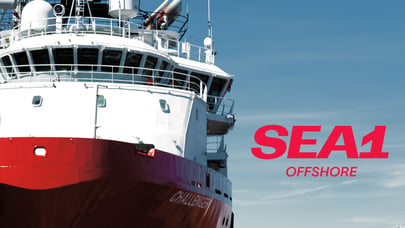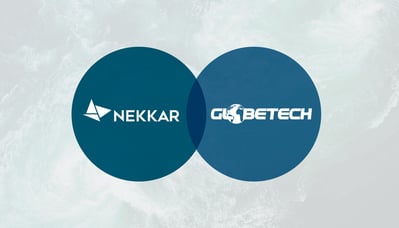It’s tempting, we know.
With well over ten thousand low-earth orbit (LEO) satellites orbiting the globe already and thousands more on the way, many wonder if it’s time to say goodbye to the good old VSAT.
Starlink is well-established in many countries and areas, OneWeb is almost ready, and Amazon has announced plans for a new LEO network. It’s safe to say that the world of maritime connectivity is experiencing a paradigm shift in speed and stability.
But how far has the shift come? Is the technology secure, stable, and capable enough to rely solely on? We believe the answer is no for now, and here’s why.
LEO pitfalls to avoid
There’s no denying that LEO satellites are the future of maritime connectivity. A typical download speed of 80–90 mb/s compared to VSAT’s traditional 4–8 mb/s speaks for itself. LEOs also significantly improve latency for better user experience, and the development is fast-paced. But where LEO satellites have advantages, they also have a few weaknesses—at least for now.
The footprint of LEO satellites is significantly smaller than that of VSAT satellites. Since they cover less area, they require targeted orbits. As of 2024, the earth has several black spots or dead zones where your LEO network will go dark, with many countries yet to join the community. The grid is growing increasingly, but you’re only guaranteed worldwide coverage with VSAT networks.
Another element of risk in relying solely on LEO satellites is capacity. As with all new technology, their performance and speed are based on quotas. If the maximum capacity is reached or overloaded, the user experience will suffer. With new customers and end-users joining daily, LEO providers must work fast to meet the market’s growing demand.
However, grid capacity isn’t your only concern when utilizing LEO networks on your vessels.
LEO networks require data usage discipline
With a high-speed connection available on board, you’d be amazed at how fast the bytes disappear. The availability of video calls, digital entertainment, and general connectivity is now expected at sea, and you’d be wise to manage usage and raise awareness to avoid running out of data too fast.
Segmentation is critical to secure connectivity when it matters. You wouldn’t want your bridge to lose connection because of the crew’s recreational digital activities. By isolating the connectivity essential to operations, you eliminate the possibility of interference and network overload.
Ensuring your crew has their isolated network quota is a good start, but you’re not quite there yet. We recommend establishing rules and routines for how much data any given crew member is assigned and how much they can use daily. A precautionary poster on how much data a specific activity typically drains from the quota could be a helpful addition to the information board.
Optimizing connectivity with combined VSAT and LEO
As with all critical IT systems, you want redundancy. You can probably achieve that redundancy in the future by utilizing a variation of LEO satellite providers. Our current philosophy, however, is choosing LEO when possible, VSAT when necessary, and 4G when convenient.
The previously mentioned pitfalls of LEO satellite networks are too significant to rely solely on. If certain connected services on board go dark, you’re potentially in big trouble. For now, we recommend using VSAT as your primary network. Speed isn’t essential for Port Authority-bound emails. Delivery is.
Connected services requiring high-speed connections, such as crew entertainment, are well-suited for LEO satellite networks. They’re nice to have, not critical. Again, use LEO if possible, but VSAT when necessary.
Overall, LEO is a magnificent addition to maritime connectivity, and we’re happy to provide it. However, as with all new technologies, it should be introduced carefully. If implemented at the correct scale, there’s significant room for improvement in performance and efficiency.



